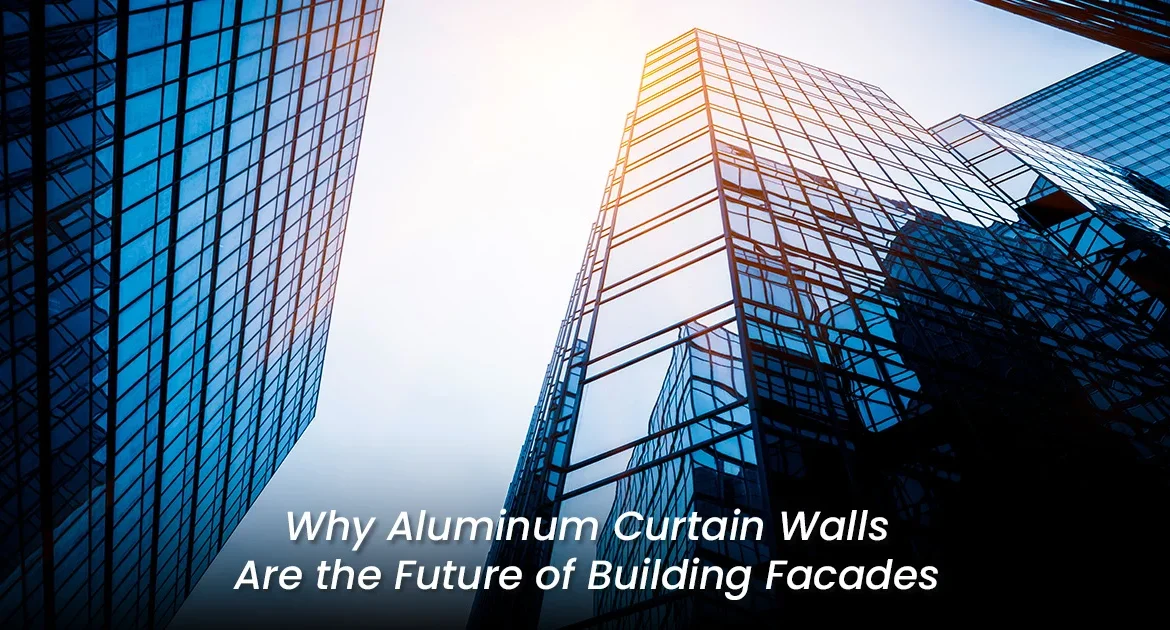When it comes to modern building facades, one material is taking the construction industry by storm – aluminium. Architects, builders, and developers are increasingly turning to aluminium curtain walls to create iconic and sustainable structures.
What Are Aluminum Curtain Walls?
Aluminium curtain walls are non-structural, lightweight outer coverings usedo envelop buildings. They are typically composed of aluminium frames that support glass, metal panels, or other cladding materials. These walls serve multiple purposes, including providing weather resistance, enhancing aesthetics, and improving energy efficiency.
What Sets Aluminum Curtain Walls Apart?
Aluminium curtain walls stand out due to their versatility, durability, and aesthetic appeal. Here’s why they are gaining prominence:
A. Design FlexibilityAluminium curtain walls offer architects immense design freedom. They can be customized to create unique and striking facades that match the vision of any project. Whether you’re aiming for a sleek, modern look or a more traditional aesthetic, aluminium curtain walls can adapt.
B. Sustainability
In an era of heightened environmental awareness, aluminium curtain walls are an eco-friendly choice. Aluminium is fully recyclable, making these walls a sustainable option. Plus, their ability to enhance natural lighting can reduce energy consumption.
C. Low Maintenance
Once installed, aluminium curtain walls require minimal maintenance. They are resistant to corrosion and weathering, ensuring they maintain their appearance and functionality for years.
How Do Aluminum Curtain Walls Enhance Energy Efficiency?
Aluminium curtain walls can significantly improve a building’s energy efficiency:
A. Thermal Performance
Modern aluminium curtain walls incorporate thermal breaks, reducing heat transfer between the interior and exterior. This results in better insulation and lower heating and cooling costs.
B. Natural Light
By maximizing natural light, aluminium curtain walls reduce the need for artificial lighting during the day. This not only saves energy but also creates a more pleasant indoor environment.
C. Solar Control
Advanced glazing options allow aluminium curtain walls to manage solar heat gain effectively. This means maintaining comfortable indoor temperatures while reducing the load on HVAC systems.
Are Aluminum Curtain Walls Suitable for All Types of Buildings?
Yes, aluminium curtain walls are highly adaptable and can be used in various building types, including:
A. Commercial Buildings
From skyscrapers to shopping centres, aluminium curtain walls are a popular choice for commercial structures due to their striking aesthetics and energy-efficient properties.
B. Residential Buildings
Many modern homes feature aluminium curtain walls to create open, well-lit living spaces. They also provide beautiful panoramic views.
C. Institutional Buildings
Schools, hospitals, and government buildings benefit from the durability and sustainability of aluminium curtain walls.
What About Installation and Cost?
A. Installation
Aluminium curtain walls are relatively easy to install, and their lightweight nature reduces the load on a building’s structure. This simplifies construction and can accelerate project timelines.
B. Cost
While aluminium curtain walls may have a higher initial cost compared to some alternatives, their long-term benefits in terms of energy efficiency, durability, and low maintenance costs make them a cost-effective choice.
What Does the Future Hold for Aluminum Curtain Walls?
The future looks bright for aluminium curtain walls in the world of architecture and construction. As sustainability becomes a top priority and innovative technologies continue to emerge, aluminium curtain walls are likely to evolve further. Expect to see even more energy-efficient designs and creative applications in the years to come.



 Get a Free Quote
Get a Free Quote
Leave a Reply